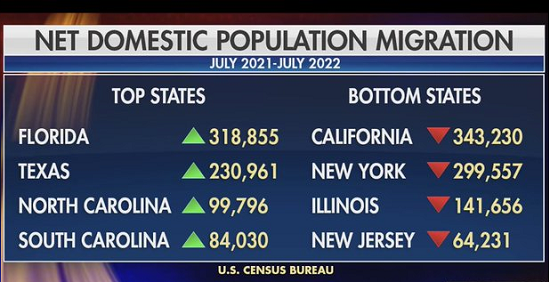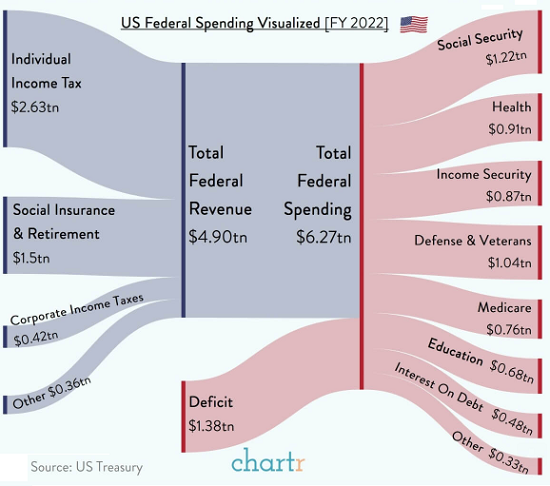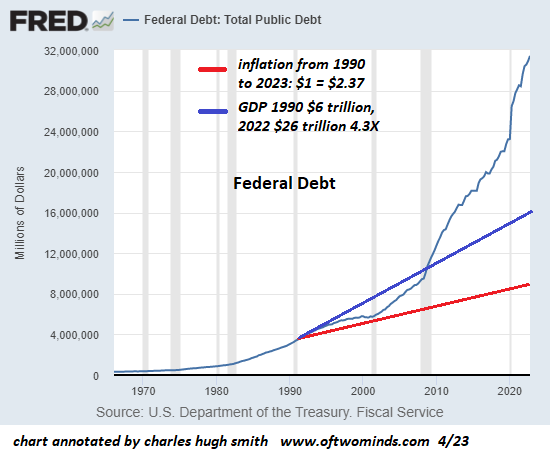Solutions abound, we just have to look for them in the right places.
Despite my reputation as a doom-and-gloomer, all of my work is about solutions. The first step in identifying realistic solutions is to dispense with the distracting clutter of fantasies, a process that is dismissed as doom-and-gloom. But if we latch onto fantasies as solutions, we can’t proceed to real-world solutions.
For four generations (80 years), we’ve become accustomed to seeking solutions from the federal government. This reliance on large-scale solutions began with the federal responses to the Great Depression and then gathered steam in World War II and the Cold War. By the 1960s, federal programs, policies and spending were the go-to solutions for every problem.
The federal government tends to be reactive. This is the nature of government, which is naturally dominated by elites and entrenched interests whose goal is to maintain their share of wealth and power by keeping the status quo in its current configuration. Any fundamental change that threatens powerful interests is naturally shelved.
The net result is the federal government only instituted environmental-protection regulations after American rivers caught fire. It takes a tremendous level of national pain to overcome the resistance of entrenched powers in the central state.
The other reason why federal policies are the go-to solutions is the money: no other entity can borrow or print money on such a vast, sustained scale. And since the Federal Reserve / federal government can fund spending without any visible sacrifices being imposed–additional spending is cost-free other than increases in the interest due on the higher debt–then everyone turns to the federal funding-spigot as a solution to any and all problems.
Thus it’s to be expected that the majority of proposed solutions center on top-down, centralized-state policies.
If only we had sound money, a fair tax system, more regulations against fraud, etc.
The problem in pursuing solutions at the top level of centralization is the competition to control the levers of federal power is intense: every concentration of wealth and power is pouring money and effort into influencing federal policies, and watering down or blocking any policy changes that might diminish their share of the wealth-power pie.
The net result is the legislative “sausage-making” process in which hundreds of pages of legislation must first be approved before we know what’s in the hundreds of pages of new laws / regulations. But the competition and process enables us to predict the general content: every entrenched interest affected by the legislation has inserted subsidies, tax breaks, exceptions, etc. to protect their share of the federal money-trough.
The federalist structure of the Constitution grants significant governmental powers to each state, and state governments grant significant governmental powers to counties and cities. Unlike the federal government, state, county and city governments cannot print money, and their ability to borrow via municipal bonds eventually faces limits due to credit ratings and the interest due on previously issued bonds.
This means local governments must make trade-offs and sacrifices to fund new initiatives. This incentivizes more practical problem-solving processes.
As a general rule, all solutions must be implemented at the local level, and so this is where the rubber meets the road in solutions. Cities and counties have to deal with the realities of their locale, funding, populace, etc. on a granular level, and so practical solutions become more attractive than ideological-driven policies.
This structure enables competition between states, counties and cities for capital and talent. Each proposed solution pursued on the local level is more or less successful, and capital and talent will over time be drawn to locales that manage practical, successful solutions to real-world problems. Those locales whose solutions fail to solve real-world problems while eating up tax revenues will lose capital and talent.
This feedback isn’t perfect, of course. Places viewed as favorable to capital and talent will grow too fast, overwhelming infrastructure and reduce the qualities that attracted new residents in the first place.
But the systemic influence of open competition eventually encourages practical, affordable, flexible solutions and discourages costly attempts at solutions which fail to solve problems.
Citizens with little voice at the federal level have much more of a say on the local level. It’s possible to gain access to local government decision-making entities and get a fair hearing. Solutions have to fit local constraints, and this encourages experimentation. Costly, cumbersome proposals are simply off the table. Creative, low-cost, low-bureaucracy solutions are more likely to get a hearing.
Then there’s a vast range of personal / household solutions. If the situation is fundamentally unfavorable, then moving to a more favorable locale is one potential solution. Shifting to a more sustainable, flexible, favorable livelihood and lifestyle is also a possibility. So is reducing dependency on long supply chains and situations that can only burn us out.
All of my 18 books are efforts to delineate problems and describe the outlines of possible solutions. The most recent three are:
Global Crisis, National Renewal,
Self-Reliance in the 21st Century
and
When You Can’t Go On: Burnout, Reckoning and Renewal.
Solutions abound, we just have to look for them in the right places.



My new book is now available at a 10% discount ($8.95 ebook, $18 print):
Self-Reliance in the 21st Century.
Read the first chapter for free (PDF)
Read excerpts of all three chapters
Podcast with Richard Bonugli: Self Reliance in the 21st Century (43 min)
My recent books:
The Asian Heroine Who Seduced Me
(Novel) print $10.95,
Kindle $6.95
Read an excerpt for free (PDF)
When You Can’t Go On: Burnout, Reckoning and Renewal
$18 print, $8.95 Kindle ebook;
audiobook
Read the first section for free (PDF)
Global Crisis, National Renewal: A (Revolutionary) Grand Strategy for the United States
(Kindle $9.95, print $24, audiobook)
Read Chapter One for free (PDF).
A Hacker’s Teleology: Sharing the Wealth of Our Shrinking Planet
(Kindle $8.95, print $20,
audiobook $17.46)
Read the first section for free (PDF).
Will You Be Richer or Poorer?: Profit, Power, and AI in a Traumatized World
(Kindle $5, print $10, audiobook)
Read the first section for free (PDF).
The Adventures of the Consulting Philosopher: The Disappearance of Drake (Novel)
$4.95 Kindle, $10.95 print);
read the first chapters
for free (PDF)
Money and Work Unchained $6.95 Kindle, $15 print)
Read the first section for free
Become
a $1/month patron of my work via patreon.com.
Subscribe to my Substack for free
NOTE: Contributions/subscriptions are acknowledged in the order received. Your name and email
remain confidential and will not be given to any other individual, company or agency.
| Thank you, Paul C. ($300), for your beyond-outrageously generous contribution to this site — I am greatly honored by your steadfast support and readership. |
Thank you, Julius L. ($50), for your magnificently generous contribution to this site — I am greatly honored by your support and readership. |
| Thank you, Michael T. ($35), for your superbly generous contribution to this site — I am greatly honored by your steadfast support and readership. |
Thank you, Sarah S. ($1/month), for your most generous pledge to this site — I am greatly honored by your support and readership. |

